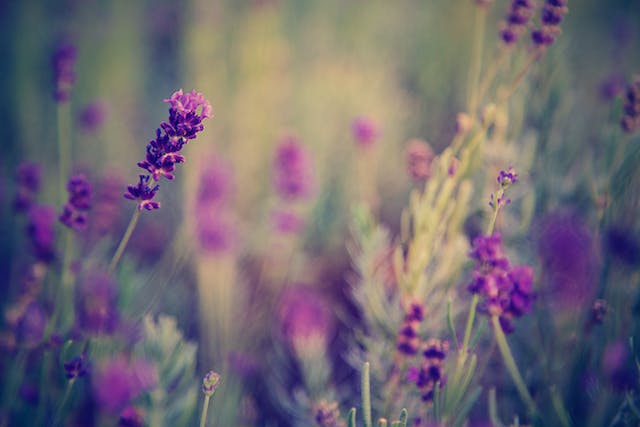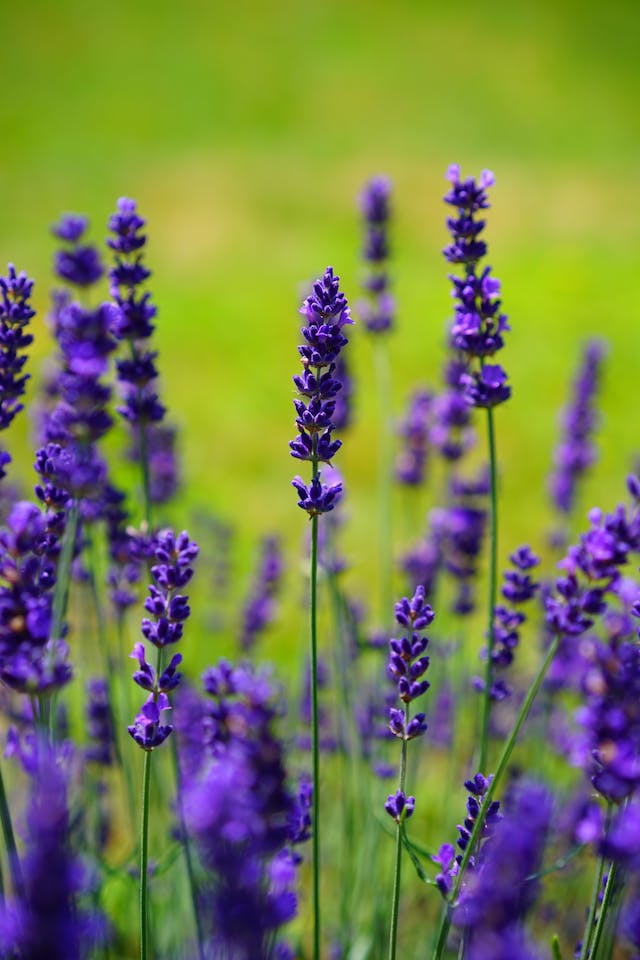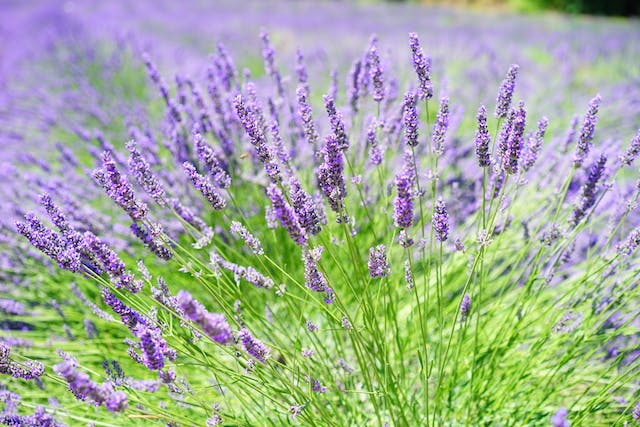Lavender is probably one of the most popular scents next to maybe vanilla or peppermint and its popularity makes it present in many households and yards. I have found it a little challenging to grow but finally have started some luck growing English variety from seed and propagating French from cuttings. I love the scent and the fact that it comes in so many different varieties. There are a number of questions and concerns floating around like:
Are lavender plants toxic to cats or dogs?
Exposure is safe. Binge eating is not. If your cat were to eat a lot, you would want to consult a vet. If you are concerned about if you dog at lavender plant symptoms, better to err on the side of caution and consult a vet.

Do pets like the smell of lavender? Is it safe for dogs or cats to smell lavender?
Can I diffuse lavender around my cat or dog? Is lavender candle safe for cats? Is lavender scent toxic to dogs? Is lavender scented litter safe for cats? It may be possible for your cat or dog to be allergic to lavender, but doubtfully to a degree that would be cause for serious concern. Lovie has sniffed it with fleeting interest. I planted things that are safe for him to chew and consume as a “trade” (did you learn that in puppy 1 or puppy 2 training classes? We did. So worth teaching your dog to trade what you want back for something that is okay for them to have safely).
Many people, myself included, have lavender essential oils for medicinal and therapeutic uses. I keep mine up in a closed cabinet so that I don’t have to worry about things like what if my dog licks lavender essential oil. While maybe mouthing a plant in a pet safe garden would be harmless, essential oils are normally very concentrated and would likely make your cat or dog very ill. Again, another reason to see a vet (which is why we suggest getting pet insurance).
FYI: we check the flowers we feature on our site with the ASPCA and do extensive internet research for both the common and scientific name just to be super pet safe. If we cannot find direct reference, we check up to genus and so on until we can confirm whether a plant is toxic or non toxic to both cats and dogs. If we are not sure, or get contradictory information, we do not include it. Many of the plants featured we have grown successfully in our own pet safe garden in Northern California. You can see many of garden stars in photos from Lovie’s Pet Safe Garden.

Physical Attributes
Lavender is an evergreen, perennial shrub with a mounded, compact growth habit. It has narrow, gray-green, aromatic foliage and produces upright spikes of tubular, purple flowers. The flower spikes can reach 2-3 inches tall and wide. Lavender plants typically grow 1-3 feet tall and wide, depending on the variety.[1][2][3][4]
General Care Tips
Plant lavender in full sun (at least 6-8 hours per day) and well-draining soil with a slightly alkaline pH. Space plants 12-18 inches apart. Water regularly until established, then allow soil to dry between waterings as lavender is drought tolerant. Prune annually in early spring by shearing back 1/3 of growth. Harvest flower spikes when blooms first open for drying.[1][2][3][4]
Fun Facts
- The name lavender comes from the Latin “lavare” meaning “to wash”, referring to its use in bathing in ancient times.[2]
- Lavender is native to the Mediterranean region and has been cultivated for over 2,500 years.[3]
- French lavender (Lavandula dentata) has toothed leaves while English lavender (Lavandula angustifolia) has smooth leaves.[1]
- Lavender attracts pollinators like bees and butterflies to the garden.[2][3]
- The fragrance of lavender is thought to have a calming effect and is commonly used in aromatherapy.[1][4]
Citations:
[1] https://www.monrovia.com/be-inspired/lavender-plant-care-guide.html
[2] https://www.waysidegardens.com/blog/lavender-care-guide
[3] https://www.thespruce.com/growing-lavender-1402779
[4] https://www.gardenershq.com/Lavandula-Lavender.php
[5] https://www.gardenia.net/guide/how-to-plant-care-grow-gorgeous-lavender

| Consideration | Details |
|---|---|
| Container Friendly | Yes, lavender can be grown in containers with good drainage.[1][2][3] |
| Indoor/Outdoor | Outdoor[1][2][3][4] |
| Sun/Shade | Full sun (6-8 hours per day)[1][2][3][4] |
| Perennial/Annual | Perennial in zones 5-9[1][2][4] |
| Flowering | Purple, blue, pink flower spikes in summer[1][2][3][4] |
| Drought Tolerant | Yes, drought tolerant once established[1][2][3] |
| Pollinator Magnet | Yes, attracts bees, butterflies and other pollinators[2][3] |
| Beginner Friendly | Yes, relatively easy to grow[1][2][4] |
| Good Ground Cover | No, grows as a shrub 1-3 feet tall[1][2][4] |
| Good Privacy Screen | Can be pruned into an informal hedge[1][4] |
| Invasive/Spreader | No, not considered invasive[1][2][3][4] |
| Hearty/Delicate | Hearty, tolerates heat and dry conditions[1][2][3] |
| Rodent Repellent | Strong aroma thought to deter some rodents like sewer rats |
| Deer Resistant | Yes, deer resistant due to strong aroma[2][3] |
| Ideal States | Mediterranean climates, but can be grown across many regions[1][2][3] |
Citations:
[1] https://www.thespruce.com/growing-lavender-1402779
[2] https://www.monrovia.com/be-inspired/lavender-plant-care-guide.html
[3] https://www.easytogrowbulbs.com/pages/lavender-lavandula-planting-guide
[4] http://www.gardening.cornell.edu/homegardening/scene9108.html
[5] https://www.waysidegardens.com/blog/lavender-care-guide





